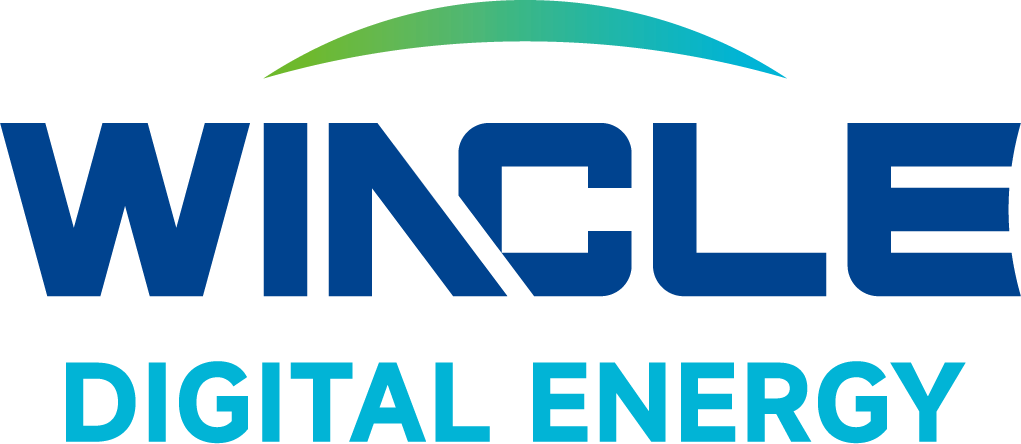Maximizing Your Home's Efficiency with Stacked Residential Energy Storage Systems
Release time:
2025-02-13
Source:
Maximizing Your Home's Efficiency with Stacked Residential Energy Storage Systems
Understanding Stacked Residential Energy Storage Systems
Residential energy storage systems (RESS) are becoming increasingly popular among homeowners looking to enhance their energy efficiency. These systems allow for the storage of excess energy generated from renewable sources, such as solar panels, and make it available for use when needed. Stacked residential energy storage systems take this concept a step further by allowing multiple units to be installed together, providing greater energy capacity and efficiency.
What Are Stacked Residential Energy Storage Systems?
Stacked residential energy storage systems consist of multiple energy storage units arranged vertically or horizontally to optimize space and functionality. These systems can store energy for later use, helping homeowners manage their energy consumption more effectively. By integrating various technologies, such as lithium-ion batteries, these systems enhance performance, ensuring that homes can rely on stored energy during peak demand times or outages.
The Importance of Energy Storage
Energy storage plays a crucial role in modern energy management. With the increasing reliance on renewable energy sources, the need for efficient storage solutions has never been more critical. Stacked residential energy storage systems offer homeowners the opportunity to:
- **Reduce Energy Costs**: By storing energy generated during off-peak hours or sunny days, homeowners can use that energy during peak times when rates are higher.
- **Increase Energy Independence**: These systems allow homeowners to rely less on grid power, providing a more sustainable energy solution.
- **Enhance Grid Stability**: By reducing demand on the grid during peak times, energy storage contributes to a more stable power supply for everyone.
Benefits of Stacked Residential Energy Storage Systems
Investing in stacked residential energy storage systems brings a multitude of benefits that can significantly enhance your home's energy efficiency.
1. Cost Savings on Electricity Bills
One of the most immediate benefits of energy storage systems is the reduction in electricity costs. By storing energy generated during lower-cost periods, homeowners can avoid paying higher rates during peak demand hours. This practice is often referred to as "time-of-use" energy management.
2. Backup Power During Outages
Stacked energy storage systems provide reliable backup power during outages, ensuring that essential appliances and systems remain operational. This is particularly beneficial in areas prone to frequent power interruptions. Homeowners can stay connected and comfortable during emergencies without relying solely on the grid.
3. Environmental Sustainability
By maximizing the use of renewable energy sources, stacked residential energy storage systems contribute to environmental sustainability. They promote the use of clean energy, reducing reliance on fossil fuels and minimizing carbon footprints.
4. Improved Home Value
Investing in energy-efficient technologies can enhance the overall value of a home. Potential buyers are increasingly interested in energy-efficient features, making stacked energy storage systems an attractive selling point.
5. Smart Home Integration
Many modern energy storage systems can be integrated with smart home technologies. This allows homeowners to monitor and control their energy usage more effectively through mobile apps, enabling real-time data analysis and adjustments for optimal efficiency.
How to Choose the Right Stacked Residential Energy Storage System
Choosing the right energy storage system can be overwhelming due to the variety of options available. Here are some key factors to consider.
1. Energy Capacity and Output
Evaluate your household’s energy needs. The capacity of the energy storage system should match your consumption patterns. Look for systems that offer sufficient capacity and output to handle your daily energy requirements.
2. Technology Types
Different technologies offer varying levels of efficiency and longevity. Lithium-ion batteries are currently the most popular choice due to their high energy density and lifespan. However, other options, such as lead-acid batteries or newer technologies like flow batteries, may be suitable depending on your specific needs.
3. Warranty and Lifespan
Review the warranty and expected lifespan of the energy storage system. A longer warranty often indicates manufacturer confidence in their product, and a longer lifespan translates into better long-term value.
4. Compatibility with Existing Systems
Ensure that the energy storage system you choose is compatible with your existing energy setup, including solar panels and inverters. This compatibility will streamline installation and maximize efficiency.
5. Installation and Maintenance Requirements
Consider the installation and maintenance demands of the energy storage system. Some systems may require professional installation, while others can be set up by homeowners. Additionally, assess the ongoing maintenance needs to ensure optimal performance.
Installation of Stacked Energy Storage Systems: What to Expect
Installing a stacked residential energy storage system involves several key steps. Understanding this process can help you prepare for a smooth installation.
1. Initial Assessment and Planning
The first step in the installation process is an assessment of your home's energy use and needs. A professional installer will evaluate your current energy systems, consider your energy consumption patterns, and recommend the best stacked energy storage solution for your home.
2. Permits and Approvals
Before installation begins, you'll need to secure the necessary permits and approvals from your local authorities. This step ensures compliance with safety and building codes.
3. Installation Process
The installation process typically involves:
- Setting up the physical structure for the stacked units
- Connecting the system to your existing electrical infrastructure
- Integrating any additional components, such as inverters or smart home technologies
This process may take several hours or days, depending on the complexity of the installation.
4. Final Testing and Commissioning
After installation, your energy storage system will undergo final testing to ensure everything is functioning correctly. This step may involve calibrating settings and confirming that the system integrates seamlessly with your home.
Maximizing the Efficiency of Your Stacked Energy Storage System
Once your stacked residential energy storage system is installed, there are several strategies you can employ to maximize its efficiency.
1. Monitor Energy Usage
Use monitoring tools to track your energy consumption and production. This data can help you identify patterns and adjust your usage accordingly, maximizing the benefits of your energy storage system.
2. Schedule Energy Usage
Schedule energy-intensive tasks, such as running appliances or charging electric vehicles, during off-peak hours when energy costs are lower. This practice ensures that you make the most of your stored energy.
3. Regular Maintenance
Regular maintenance is crucial for optimal performance. Follow the manufacturer's guidelines for maintenance and keep an eye on the system's performance to identify any issues early.
4. Stay Updated on Technology Advancements
The energy storage landscape is continuously evolving. Stay informed about new technologies and advancements that can enhance your system’s efficiency and capabilities.
Conclusion
Stacked residential energy storage systems offer a transformative approach to maximizing your home’s energy efficiency. By storing excess energy, reducing costs, and enhancing reliability, these systems empower homeowners to take control of their energy consumption and sustainability initiatives. As technology continues to advance, the potential for energy storage solutions will only increase. Investing in a stacked energy storage system today not only benefits your immediate energy needs but also contributes to a more sustainable future. Embrace the opportunity to enhance your home’s energy efficiency and enjoy the numerous benefits that come with it.
FAQs about Stacked Residential Energy Storage Systems
1. What is a stacked residential energy storage system?
A stacked residential energy storage system consists of multiple energy storage units that store and manage energy for home use. These systems can optimize space and enhance energy capacity.
2. How do these systems help save on electricity bills?
By storing energy during low-cost periods and using it during peak hours, homeowners can significantly reduce their electricity costs.
3. Can stacked energy storage systems provide backup power?
Yes, these systems can provide backup power during outages, ensuring that essential appliances remain operational.
4. How do I choose the right energy storage system for my home?
Consider factors such as energy capacity, technology type, compatibility with existing systems, and warranty options when choosing the right system for your needs.
5. How often should I maintain my energy storage system?
Regular maintenance is essential for optimal performance. Follow the manufacturer's guidelines for maintenance schedules and check your system periodically for any issues.
6. Are stacked residential energy storage systems environmentally friendly?
Yes, they promote the use of renewable energy and reduce reliance on fossil fuels, contributing to a sustainable and eco-friendly energy solution.
Stacked residential Energy Storage System
latest news












